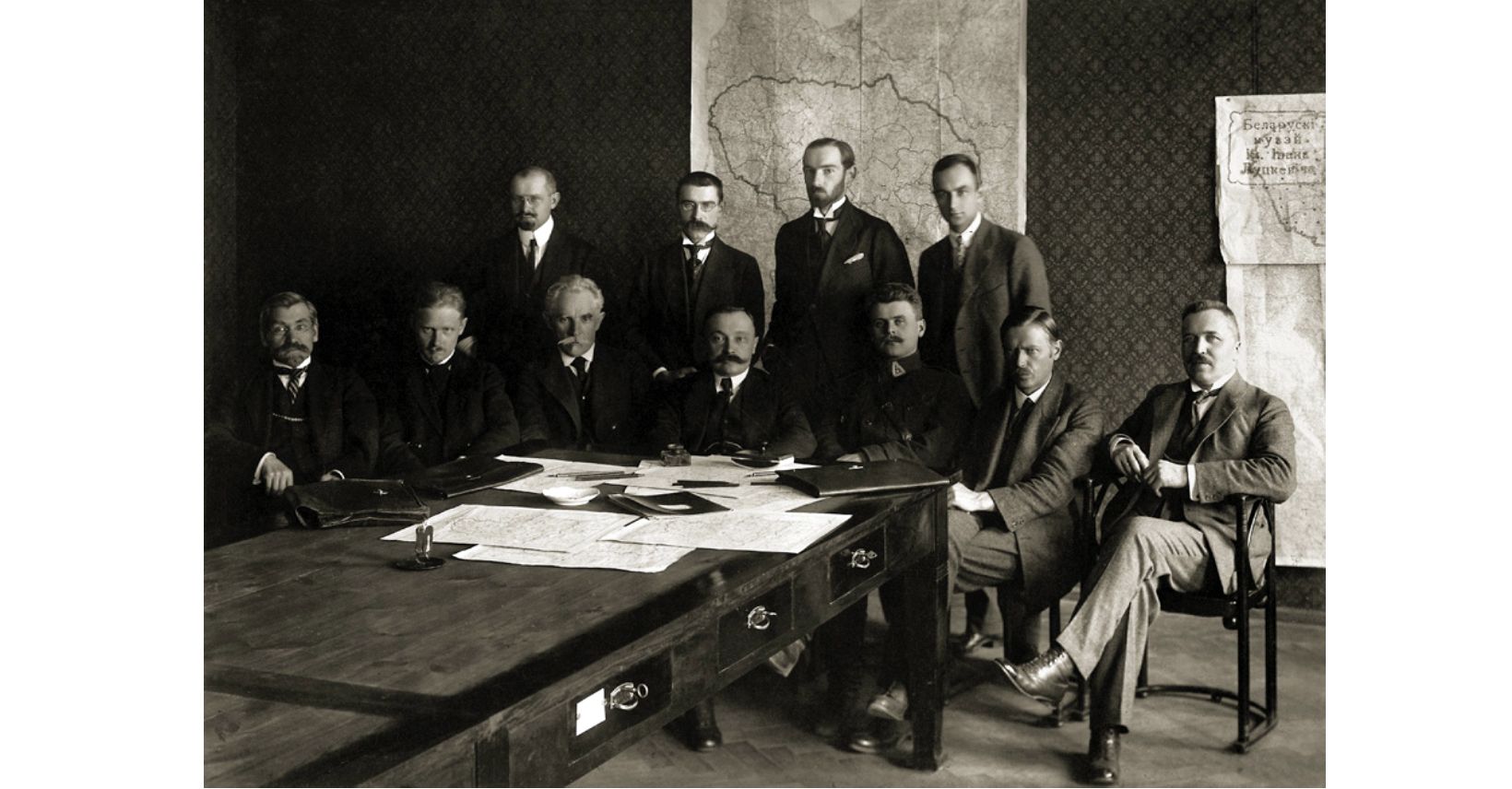Address: Perkūno a. 25, Kaunas
Architect V. Landsbergis
Built in 1933


Address: Perkūno a. 25, Kaunas
Architect V. Landsbergis
Built in 1933
Petkevičiai was a typical family of interwar intellectuals. Tadas Petkevičius was raised in a noble family. He became a lawyer and later worked for the Lithuanian government during the period of independence: in the Cabinet of Ministers, later in the Ministry of Foreign Affairs, and was also an adviser to the Lithuanian mission in London. Tadas Petkevičius was also representing Lithuania at the sessions of the League of Nations and at the Hague Tribunal. Since 1930 he also worked at the Faculty of Law of Vytautas Magnus University.

The Fourth Cabinet of Ministers of the Republic of Lithuania. Kaunas, 1919. Seated (from left): Justinas Zubrickas, Juozas Paknys, Prime Minister Mykolas Sleževičius, Antanas Merkys, Steponas Kairys, Jonas Vileišis. Standing: Aleksandras Stulginskis, Jokūbas Šernas, Voldemaras Vytautas Čarneckis, Tadas Petkevičius. Unknown photographer. Source: Wikipedia.
While still studying in Moscow, he also met his future wife, Julija Jablonskytė, the daughter of the linguist Jonas Jablonskis. Unfortunately, both of them lost their chosen studies because of the First Wold War and political revolution in Russia. Finally, Lithuania’s Independence returned them back to their homeland. In 1919 the couple got married.
In Lithuania, Julia was working as a teacher and translated several books. The family had three children. As they grew up, Julia decided to resume her art studies. At that time, Kaunas School of Art was the only high art school in Lithuania. During her studies, the artist managed to try sculpture, ceramics, and decorative painting, and graduated as a painter. Julia became a talented portraitist, she also participated in the activities of the Lithuanian Society of Women Artists.
Before building their own house, Petkevičiai were renting various apartments, but after experiencing that the rent was not worthwhile, it was decided to build a private house. It was not necessary to look far for the author of the house project. The brother-in-law of Julija – Vytautas Landsbergis-Žemkalnis – was already a famous architect at that time, so he created the project.
Later, when Julia’s mother became a widow, she expressed a desire to live with her daughter. This adjusted the project of a house: instead of a planned terrace, the architect designed several small rooms on the second floor, on the southwest side. In 1932 Petkevičiai family moved to their house in Žaliakalnis.

Photo of the house, 1940s. Photo source: Lithuanian Archives of Literature and Art.
The house expressed the spirit of existence minimum and the needs of the owners: luxury was avoided, the interior was rational, a beautiful wooden staircase designed in the middle of the house became the central point, connecting both floors. On the first floor there was a large office of Tadas Petkevičius. He was a bibliophile and belonged to the Society of Book Friends, so books reigned at home – a large number of bookshelves were designed for a large library. Adjacent to the hall were: student lounge, dining room and kitchen. In the lobby of the second floor, next to the bookshelves, there were: the master bedroom, rooms for childrens, the artist’s studio, as well as two small rooms for the grandmother.

J. Jablonskytė-Petkevičienė. Tadas Petkevičius in his work room, about 1937. Painting. Property of J. Garmuvienė.
The house was surrounded by a large plot of land. The decorative part of it was in front of the house, while on the other side there was a garden. A silver spruce was planted near the house, as well as a larch and a decorative tree of paradise apples. The road leading to the house was surrounded by a row of rose trees. The multicolored lilacs grew along the edges, along a wooden fence.
Adversity broke out with the outbreak of war and occupation, which shattered former family life. Luckily, the confiscation and nationalization of the house was partly avoided. In 1945 T. Petkevičius was arrested and sentenced to eight years in prison the following year with confiscation of all property. However, after the owners presented documents that the house was built on behalf of both spouses, the court ordered half of the house to be returned. Under a “policy of compaction” during the Soviet period, until the end of the 1970s, various Russian families were sharing the house with the owners.
During the war, the house also sheltered a Jew girl rescued from the ghetto. In 1943 her mother escaped from the ghetto and handed over the seven-year-old girl to Ona Landsbergienė, and from her to Julija Petkevičienė. She later met her family and went to Israel in 1948.

A dog in front of the house, 1940s. Photo source: Lithuanian Archives of Literature and Art.
Tadas Petkevičius returned from exile in 1953. He was lucky enough to get a job at the M. K. Čiurlionis Art Museum, and officially held the position of a guard, hall supervisor, and firefighter. Later, when he was fired, he was translating books. After Lithuania regained its independence, the family managed to regain the rest of the house.
Text by Žilvinas Rinkšelis
Special thanks for the shared stories and warm welcome to the owners of this house – Garmai and Lukėnai families!
Sources:
Gyvenimo juostos: Julija Jablonskytė-Petkevičienė. Vilnius, 2013;